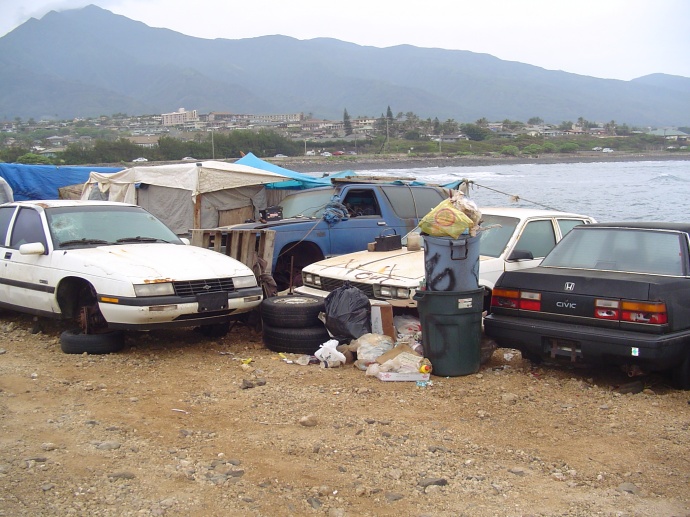Ask the Mayor: Clearing Out Homeless Camps
The mayor answers questions from the public in this series.
By Mayor Alan Arakawa
Q: What can be done to enforce the “No Camping” ordinance at our county parks— specifically at the lower end of Kanaha Beach park? There is a growing unsightly encampment just off Amala and Ka‘a streets that has been there for a year!
There is garbage everywhere, a smoky open fire daily, stolen shopping carts filled with debris, old furniture, and a “No Camping” sign 50 feet away!
Maui County has park rangers who patrol the area daily, but they seem to ignore this growing eyesore. Allowing these camps to proliferate creates a very negative impression on our visitors, along with obvious health issues and fire risk. There are community services available to help the homeless – unlawful squatter camps in our parks should not be tolerated. Thank you for your attention to this matter.
A: You’ve touched on a very complex matter, one that the county and about 40 Maui community and state agencies have been diligently working on for several months.
Our park rangers conduct regular “sting” operations to help clear out homeless individuals and families from county parks, but it’s not as simple as it might seem. Since another major homeless encampment was cleared out late last year in Wailuku, several dozen people of all ages chose not to relocate to various shelters and instead moved to new locations near county beach parks.
They are joined by numerous individuals and families who cannot yet return to local homeless shelters due to time limitations at the shelters, others who choose not to take advantage of shelters due to the facilities’ strict rules on alcohol and drug use, and some who are dealing with mental illness, substance abuse issues and a host of other challenges that make it difficult for them to join mainstream society.
Our park rangers have issued numerous citations and cleared out encampments at Kanaha, Baldwin, Waiehu and Waihe‘e but the illegal campers often return shortly after the officers leave the area. Please know that we are aware of this serious issue and are working together with the agencies that can best help us provide care and services for those affected. Maui Police Department, which assists our rangers with citations and sting operations, says that the percentage of homeless individuals who are criminal offenders is actually very low. While we aggressively pursue arrest and prosecution for such individuals, we will continue to find workable solutions for the kupuna, keiki, parents and working folks who cannot get back on their feet financially. These members of our community deserve to be treated with respect and compassion even as we work to keep our parks safe, attractive and accessible for all park users.
Q: Why was the Kahului Wastewater Treatment Facility built at ground zero in a tsunami zone?
A: In the 1970s when the plant was built, the designers likely preferred the site because it was just on the outskirts of the new town center of Kahului. Had they built the plant closer to the urban core, we would be faced with the possibility of frequent odor complaints from wind drift.
Placement of our wastewater facilities was and still is a tough decision, because no one wants a treatment plant near them, yet plants near the ocean are in a tsunami or flood zone. If we build a plant higher uphill, we incur increased pumping costs from pumping untreated wastewater uphill, which is the case in Kihei.
Our Kihei #6 pump station, located at Kalama Park, basically collects all the wastewater from north and south Kihei and pumps it uphill to the wastewater treatment plant above the highway. This costs the county much more than if the plant were located downhill or at the same elevation. Economically speaking, our treatment plants are typically located near the shoreline because the lower elevations offer the lowest operational costs.
Q: I’m wondering if there are any plans to build a sidewalk from the Pukalani Superette area to King Kekaulike High School? It’s dangerous for kids and others to walk in the drainage ditch or in the overgrown grass as they do now.
A: I’m pleased to report that yes, a project to build a sidewalk in the area you mention is underway. Our Public Works Director David Goode tells me that the project has gone out to bid, so we should see construction start later this year. Thank you for inquiring. The safety of our children and teens as they are walking to and from school is of utmost importance.
Want to Ask the Mayor?
Submit your questions about County of Maui programs, services, operations or policies to Mayor Alan Arakawa via email: [email protected], phone: 270-7855 or mail: 200 S. High Street, 9th Floor, Wailuku, Hawaii 96793. Questions submitted will be considered for inclusion in the Ask the Mayor column.











